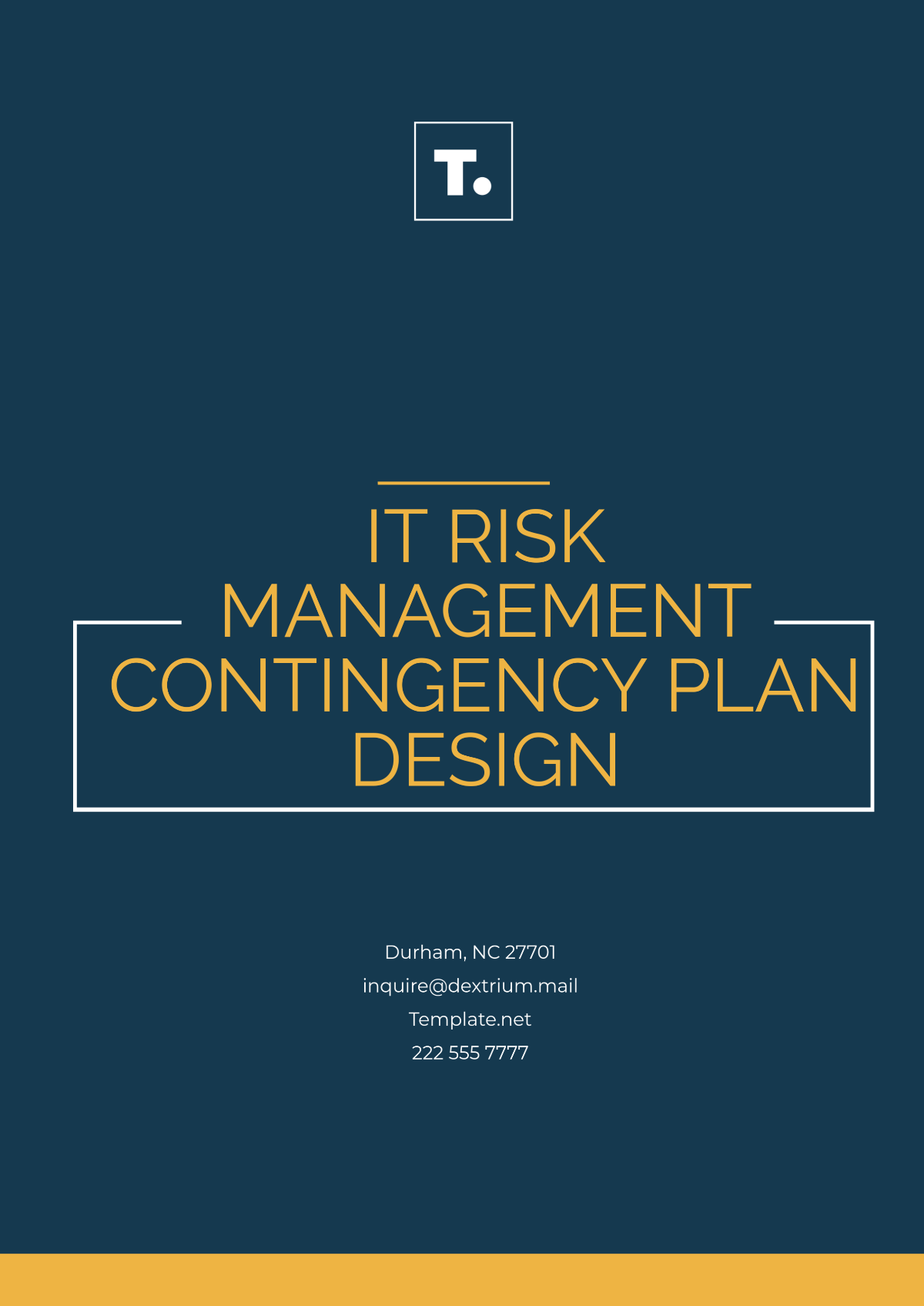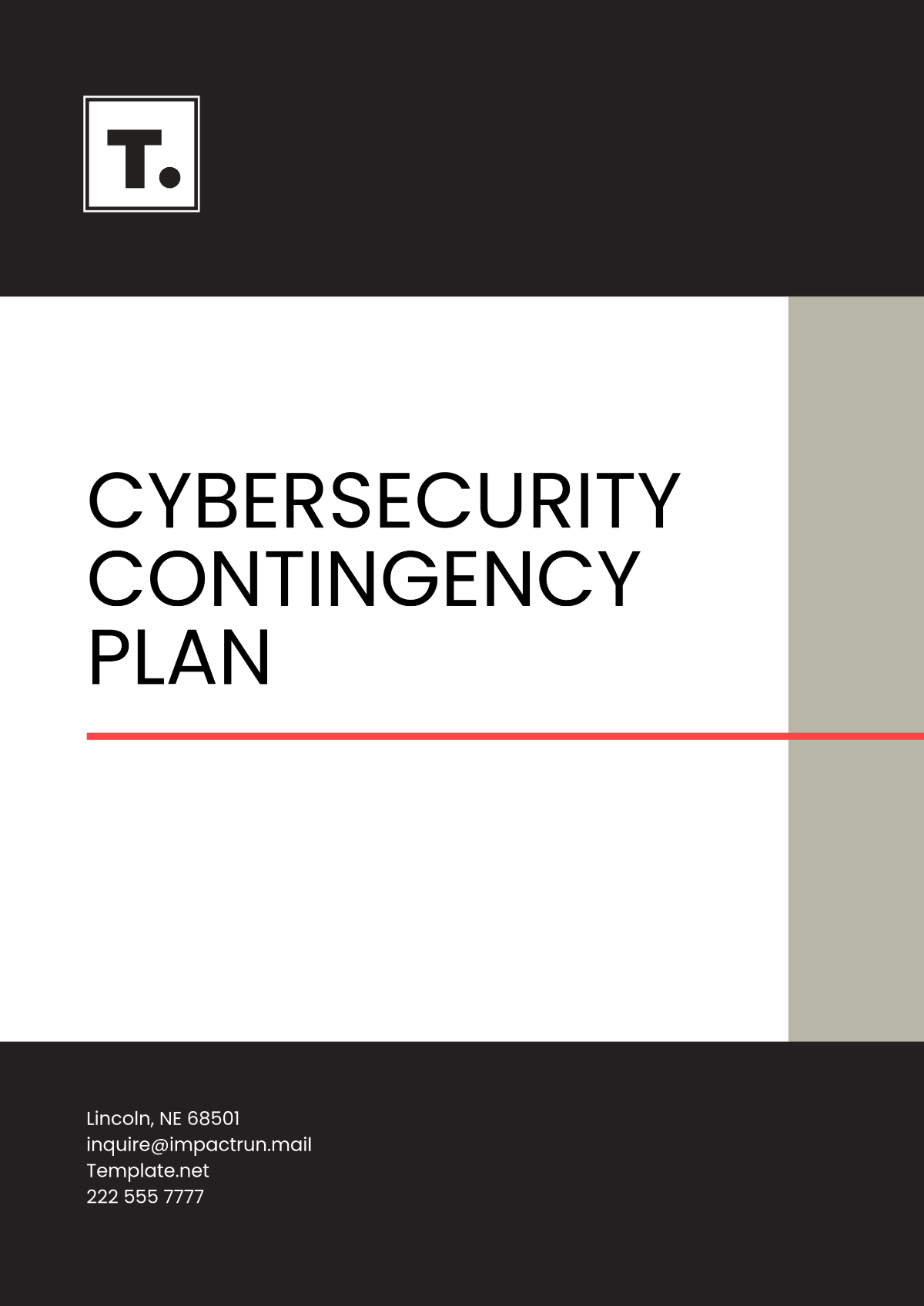Cybersecurity Contingency Plan
Prepared By: [Your Name]
Date: July 1, 2060
I. Introduction
The purpose of this Cybersecurity Contingency Plan is to provide a structured approach to prevent, detect, respond to, and recover from cybersecurity incidents. This comprehensive plan aims to safeguard our organization's digital assets, ensuring minimal disruption to operations and maintaining stakeholder trust. The plan applies to all IT systems, networks, and data managed by our organization.
II. Roles and Responsibilities
Effective execution of this plan requires clear roles and responsibilities:
Chief Information Security Officer (CISO): Oversees the entire cybersecurity initiative, ensures alignment with business objectives, and reports directly to the executive team.
Incident Response Team (IRT): Coordinates the incident response process, conducts risk assessments, and implements containment measures.
IT Support Staff: The person actively supports and resolves technical issues, minimizing impact and restoring normal operations.
Communications Director: Manages internal and external communications during and after an incident.
Human Resources and Legal Teams: Provide support in handling personnel issues and legal implications, if any.
III. Incident Identification and Classification
To ensure timely detection and appropriate response, incidents are categorized into the following classifications:
Suspicious Activity: Any anomalies or unauthorized access attempts detected by security monitoring tools.
Minor Incident: An isolated breach with limited impact on operations, easily contained and resolved.
Major Incident: A large-scale breach affecting multiple systems, requiring immediate intervention and resource allocation.
Regular audits and the use of advanced threat detection technologies are critical for effective monitoring.
IV. Response and Containment
Upon identification of an incident, the following steps should be executed promptly:
Activate Incident Response Team: Notify the team and initiate immediate action plans based on incident classification.
Contain Affected Systems: To contain threats and protect system integrity, isolate compromised networks, systems, or data by segregating them from secure areas of the infrastructure.
Gather Evidence: Ensure to comprehensively documenting all actions taken, maintain and safeguard logs, and systematically gather all data that is essential for conducting a thorough investigation.
Mitigate Damage: Implement countermeasures to minimize impact and prevent recurrence.
V. Recovery and Restoration
Following containment, these steps will ensure a return to normal operations:
System Restoration: Rebuild, repair, or replace affected system components based on the latest secure configurations.
Data Recovery: Restore the data from secure backup sources, making sure to maintain the integrity and availability of the information throughout the restoration process.
Post-Incident Review: Conduct a comprehensive review, identifying lessons learned and opportunities for improvement.
VI. Communication Plan
Clear and concise communication is vital during a crisis. This plan includes:
Internal Notifications: Ensure all employees are informed of their roles and responsibilities, emphasizing confidentiality.
Stakeholder Engagement: Regular updates to stakeholders informing them of the status and any impacts.
Media and Public Coordination: Carefully crafted statements to maintain public confidence while preserving operational security.
VII. Testing and Training
To ensure readiness, we will engage in regular:
Drills and Simulations: To evaluate how effective the response procedures are and to identify any potential shortcomings or gaps within them, a thorough testing process should be conducted.
Training Sessions: Regularly scheduled workshops for all personnel to raise awareness and proficiency in handling incidents.
Plan Reviews: Annual evaluations of the contingency plan to keep it updated based on evolving threats.
VIII. Appendices
This section contains supplementary materials to support effective execution:
Contact Lists: Emergency contact numbers and email addresses for critical team members and third-party service providers.
Tools and Resources: A detailed list of approved software, hardware, and online resources used for maintaining and managing security within the organization.
Reference Materials: Policies, procedures, and regulatory standards guiding our cybersecurity strategy.































